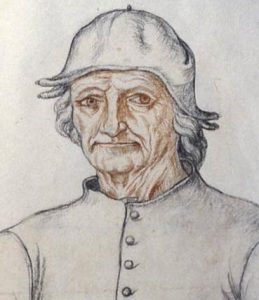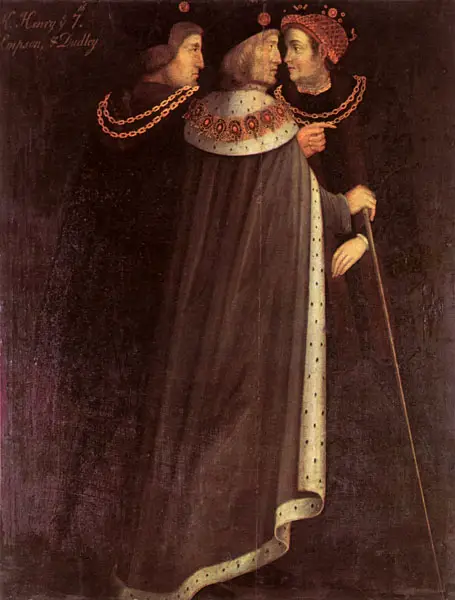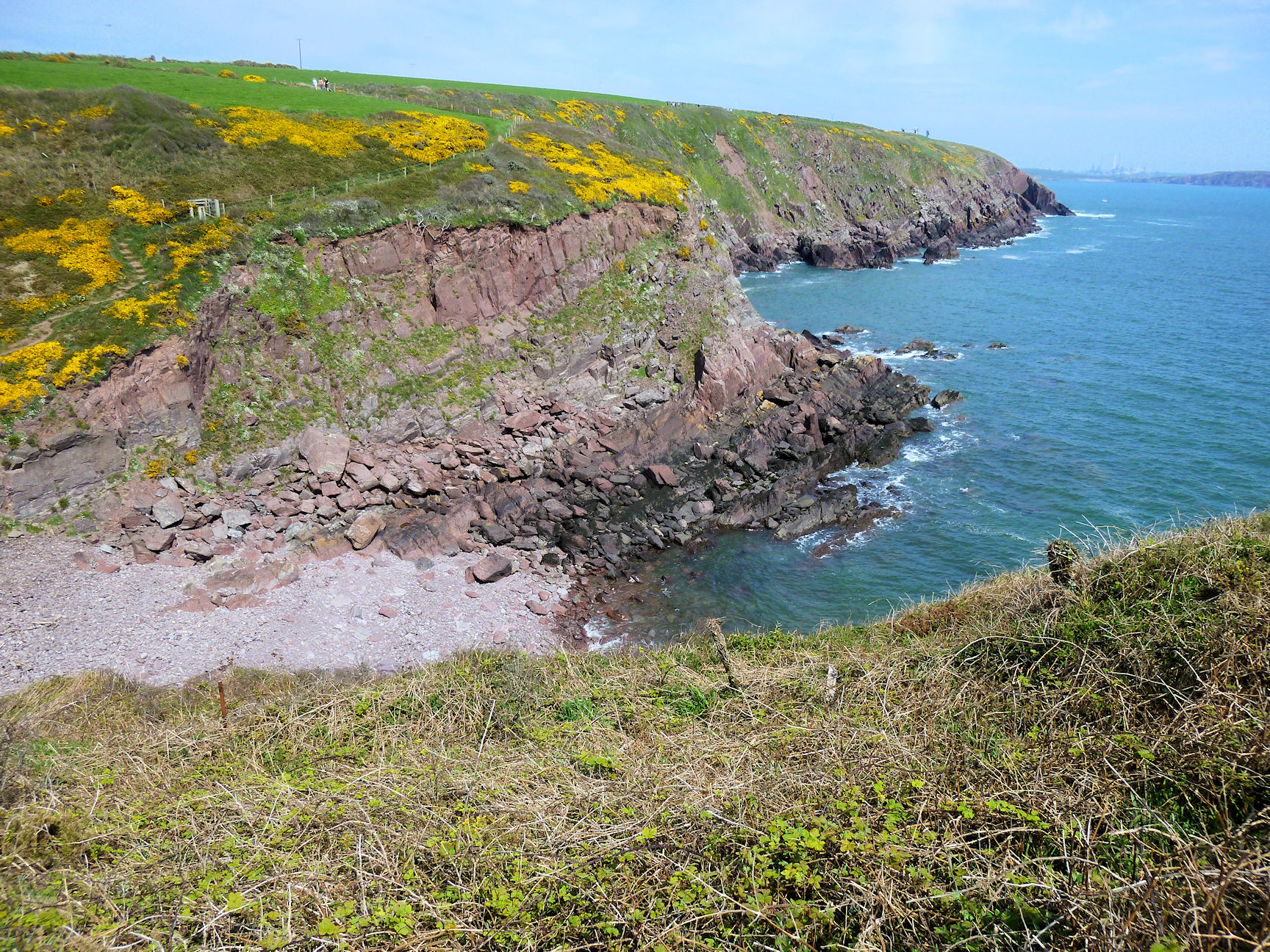
Portrait of Hieronymus Bosch, c. 1550,
(attr. Jacques Le Boucq)
On Wednesday 9 August 1516, a funeral mass was sung for the soul of Jeroen von Aeken. Better known by his artistic name of Hieronymus Bosch, he was 58 to 66 years old at death. Dying in the city of ’s-Hertogenbosch, located in the Brabant, Bosch may have passed on from pleurisy which was plaguing the city around that time and claimed the lives of his neighbour, a friend, and one of his cousins.
Bosch was born between 1450 and 1457 into a family of painters; his great-grandfather, grandfather, and other relatives were all artists. Bosch likely completed his first works in the family’s studio, where they would sometimes collaborate on works. His paintings featured religious iconography mixed in with sometimes dreamy, sometimes nightmarish elements.
A strict moralist, Bosch sought to display humanity and all its failings in a surreal setting. Of his 35 to 40 existing works, seven are signed. As a result, some of the attributions are disputed. It should be noted that it was not entirely common at the time for an artist to sign his or her works.
The Brabant was an area in the modern-day Netherlands, which boasted the capital cities of Brussels, Louvain, Antwerp, and ’s-Hertogenbosch. ’s-Hertogenbosch profited from the textile industry and had a population of around 16,000 when Bosch passed away. The name of the city is a contraction from “des Hertogenbosch,” meaning, “the Duke’s Forest;” it is commonly shortened to Den Bosch, or The Forest. Because it was a capital city, ’s-Hertogenbosch was frequented by nobles who took an interest in Bosch’s work. It is likely that, once he started receiving commissions, the surname of “Bosch” was adopted by Hieronymus to reflect his city of origin.
Between 1479 to 1481, Bosch married the daughter of a merchant. The couple was childless, and it was in his wife’s home where Bosch completed many of his paintings. Bosch may have been impacted by a fire that occurred in 1463, which saw some 4,000 houses in ’s-Hertogenbosch destroyed.
Critics have had a great deal of difficulty throughout the centuries in determining the exact meaning of the symbolism in Bosch’s paintings. Most of his topics were certainly of a religious nature, and frequently displayed themes of indulgence in sinful pleasures leading to hellish consequences. There are also inexplicably nightmarish figures dancing across the same canvas as a dreamscape. One of his more famous examples, the Garden of Earthly Delights, has a multitude of nude figures cavorting across the canvas with miscellaneous monsters. His later paintings had the effect of placing the viewer inside the painting, with unsettling close-ups of the subjects. The Crowning with Thorns is an example of this later artistic expression.
Despite being born, living and working, then dying, in ’s-Hertogenbosch, all of Bosch’s surviving works are scattered across Europe. There are none normally kept in his hometown. Philip II of Spain, husband to Mary I of England, took a particular interest in Bosch’s works. His acquisition of several paintings has resulted in the Prado Museum in Spain having a fine collection, and other of Bosch’s works being held by Spanish museums.
During his lifetime, Bosch became a member of the Brotherhood of Our Lady, attaining the status of Insignis Pictor, meaning “distinguished painter.” The Brotherhood of Our Lady was a philanthropic, religious organisation that put together plays, festivals, and other entertainments in honour of the Virgin Mary. This position with Our Lady further connected Bosch to influential people, which included members of the religious community. Bosch’s father and grandfather had been members, as well. Bosch’s association with Our Lady led to his possible involvement with some elements of St. John’s Cathedral in ‘s-Hertogenbosch.
The bizarre depictions of nude, humanoid figures mashed together with parts of animals have left art historians puzzled. Even in his own day, it was thought that Bosch had access to occult knowledge and sources because of the disturbing images he painted. The technique used by Bosch, impasto, was different than that normally used by Dutch painters at the time. Bosch’s works are predominantly painted on oak panels.
Many of Bosch’s works were destroyed in the 16th century because they were thought to be immoral. The paintings themselves reflected medieval ideas and symbolism, modernising them for the shift toward Renaissance thinking. To this day, some of the images associated with Hell and suffering arguably come from Bosch’s paintings.
Aside from the obvious religious tone of Bosch’s work, he appears to have been inspired by the theatre. The costuming of Bosch’s subjects and the view that is provided is reminiscent of a stage set. He also frequently took scenes from everyday life and incorporated them into his pieces.
Five hundred years after his death, the man known as a Hieronymus Bosch is mostly a mystery to the world. The exact inspiration behind his art remains unknown, and the meaning of each piece is still well open to debate. His final resting place is unknown, though there is a statue of him by St. John’s Cathedral in ’s-Hertogenbosch. The creativity of this man has captivated viewers for hundreds of years, and yet, we still do not know much more now about how his mind worked than anyone knew in 1516.
I would highly recommend following the first link in "Sources & Suggested Reading" to the Prado Museum’s presentation of its Bosch exhibition.
Here is a video about St. John's Cathedral in 's-Hertogenbosch:
Heather R. Darsie lives in the United States with her family and three parrots. She works in the legal field, with a focus on children. She obtained a Bachelor of Arts degree in German Languages and Literature, then a Juris Doctorate in American jurisprudence, and studied abroad in Costa Rica and France. Heather has always loved history. She first became acquainted with Elizabeth I when she was in middle school and chose to write a book report about her. Since then, she has always held an interest in the Renaissance and its numerous enigmatic citizens, with particular focus on the history of England and Italy. She is currently working on a book on the heraldry of Tudor women and is also researching Anne of Cleves.
Sources & Suggested Reading
- Prado Museum. “Bosch. The 5th Centenary Exhibition.” https://www.museodelprado.es/en/whats-on/exhibition/bosch-the-5th-centenary-exhibition/f049c260-888a-4ff1-8911-b320f587324a Retrieved 30 July 2016.
- Birschel, Annette. “Hieronymus Bosch, the Return of a Mysterious Painter.” 9 February 2016. http://www.dw.com/en/hieronymus-bosch-the-return-of-a-mysterious-painter/a-19036450 Retrieved 30 July 2016.
- “Hieronymus Bosch Biography.” http://www.hieronymus-bosch.org/biography.html Retrieved 1 August 2016.
- "Hieronymus Bosch". Encyclopædia Britannica Online. Encyclopædia Britannica Inc., 2016. https://global.britannica.com/biography/Hieronymus-Bosch Retrieved 2 August 2016.
- Rachman, Tom. “For Hieronymus Bosch, One Helluva Homecoming.” 4 March 2016. http://www.nytimes.com/2016/03/05/arts/design/for-hieronymus-bosch-one-hell-of-a-homecoming.html?_r=1 Retrieved 1 August 2016.





FROM DEREK WILSON:
Ref Heather’s notes about Bosch, one of the biggest fans of this extraordinary painter was Philip II of Spain. He collected several of the artist’s works for display in his palace at the Escorial and for his personal meditation. Anyone wanting to know more might like to read the article on Philip and the Escorial in the current issue of History of Royals magazine.